Wood Turtle (Glyptemys insculpta)
by Jeff LeClere
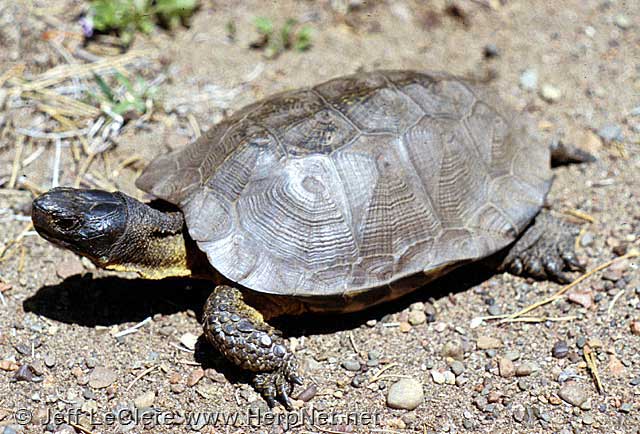
Status
ENDANGERED and Species of Greatest Conservation Need. It is illegal to kill or collect this species by law in Iowa. Wood turtles are very rare in Iowa and are completely protected. Any seen should be reported.
Description
The wood turtle is very rare in Iowa and throughout most of its range. Adults are between 5 1/2 and 8 inches in length (Conant and Collins, 1991). Unlike many of Iowa’s native turtle species, males attain greater size than females. The wood turtle acquired its name due to the appearance and feel of a shell sculpted from wood. The shell is rough; every scute contains growth rings and keels radiating from the center. Sometimes, these keels are yellow in coloration, but in most individuals, they are unmarked leaving the entire carapace rich brown. The carapace has a low keel running front to back. The plastron is yellow with large black blotches, each scute has one blotch bordering the outer edge.
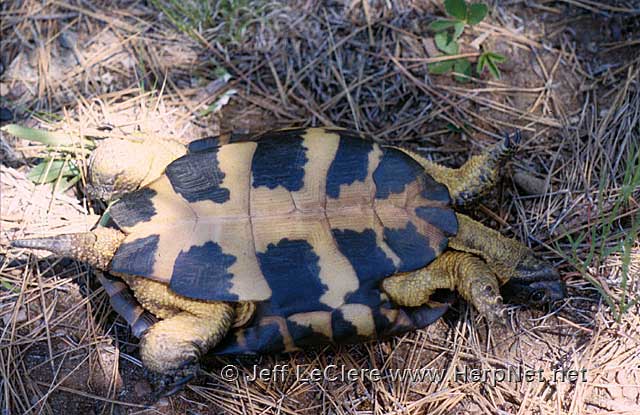
The ground color of the skin is brown with no markings on the head, limbs, and tail. The neck and soft skin areas near the shell are orange or yellow. Male wood turtles have larger heads, grow to a larger overall size, have longer carapaces, have a concave plastron, and have longer, thicker tails than females. The young are different from the adults. They are gray or brown all over with no bright coloration. They also have exceptionally long tails – as long as their carapace. Hatchlings are from 1 1/8 to 1 5/8 at hatching.
Subspecies
There are no recognized subspecies of the wood turtle, Glyptemys insculpta.
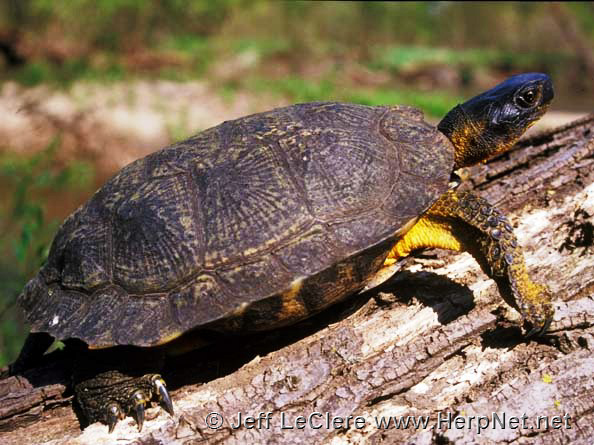
Range
The wood turtle is found only along the Cedar River in northeastern Iowa. There are very few small populations where suitable habitat is found near the river.
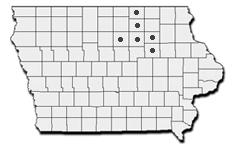
Habitat
One of the most limiting factors in this species distribution is its habitat preference. The wood turtle, although named for the appearance and feel of the carapace, could also be dubbed so due to its favorite biome. Clear streams, rivers and woodland ponds near forest are used by wood turtles, and the destruction of such habitat is sufficient to exterminate these turtles. Flooding has had detrimental effects on wood turtles. Juvenile recruitment has been very low due to nest depredation and flooded nests.
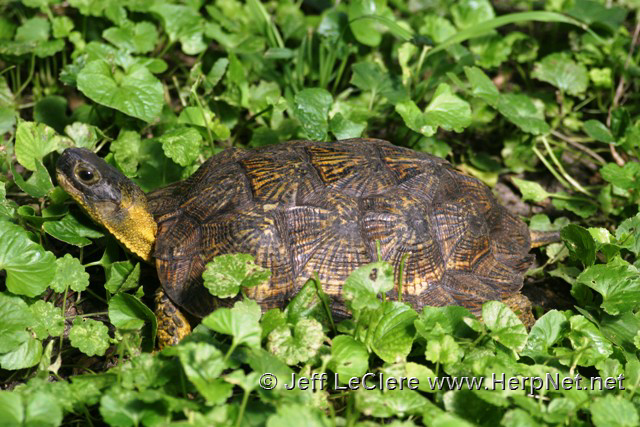
Habits
The wood turtle is active from April until October. It burrows in mud or near some underwater structure during hibernation. Although it basks along rivers in spring and fall, they spend most of their summer on land. They are one of the most terrestrial of Iowa’s turtles, but they do not venture very far from the river. They are diurnal and spend their days wandering about searching for food. During the hottest part of the day, they enter water or take refuge in heavy brush or in thickets; these areas are also used for cover at night. The times of peak activity are morning and, to a lesser extent, evening (Ernst, 1986).
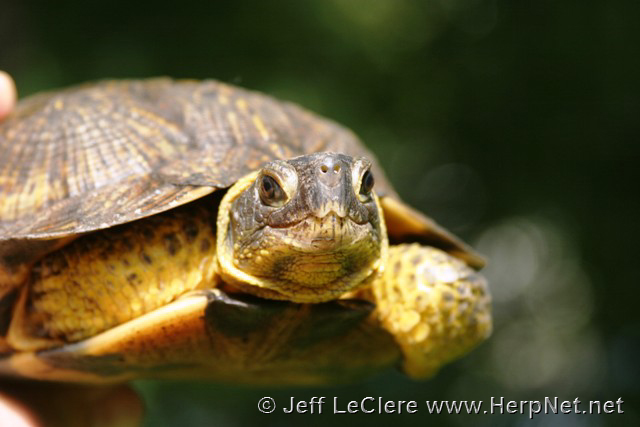
Male wood turtles return to the water to spend the night more frequently than females (Kaufmann, 1992). Wood turtles have maze learning capabilities (Pritchard, 1979) and this undoubtedly serves them well on their terrestrial journeys. Wood turtles are a late maturing species at 14-18 years of age (Oldfield and Moriarty, 1994). Males mature later than females at a larger body size (Ernst, Lovich, and McBreen, 1990). Mating occurs in spring and fall (Farrell and Graham, 1991). Courtship entails the pair swinging their heads from side to side as they approach one another.
Food
Wood turtles are omnivorous. Strawberries, blackberries, blueberries, raspberries, dandelions, and many other plants are eaten. Earthworms, slugs, snails, insects, mollusks, and carrion comprises the carnivorous portion of their diet. A unique behavior has been recorded for wood turtles. They will rock back and forth from side to side. The vibrations from their front feet against the ground cause earthworms to surface. As they do so, they are eaten by the turtles (Kaufmann, 1989).